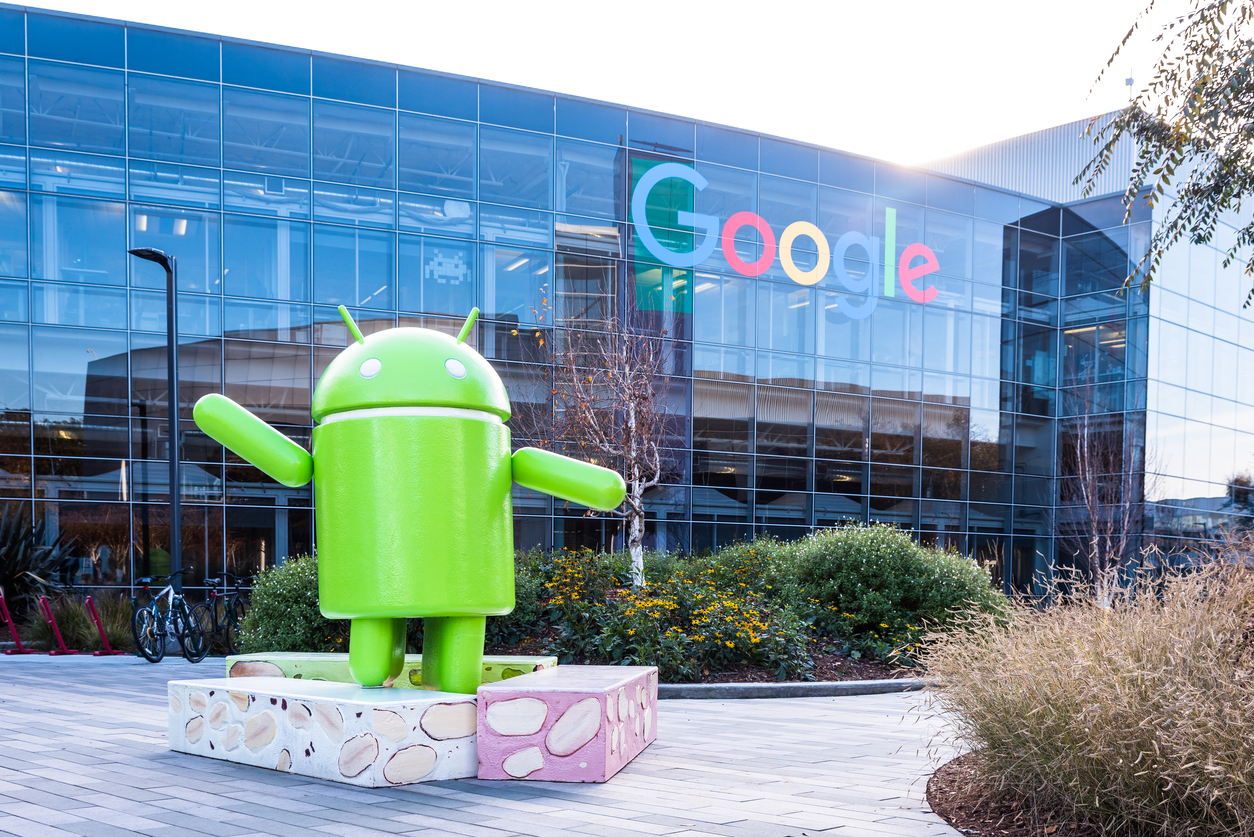Yesterday, a shocking report by The New York Times shared its investigation on sexual misconduct at Google. It alleged that Google had protected at least four senior executives over the past decade after they were accused of sexual misconduct. They obtained corporate and court documents and spoke to more than three dozen current and former Google executives and employees about these episodes.
Here is a summary of the three incidents that the New York Times article reported on..
The controversy with Andy Rubin, Creator of Android
Andy Rubin, the creator of Android, often exhibited unprofessional behavior towards his co-workers. He was involved in a consensual relationship with a woman employee from 2011, who reported to one of his direct reports on the Android team. Google’s human resources department was not informed about this relationship despite a policy in place to do so. In 2013 when she wanted to cool things off, she agreed to meet Rubin at a hotel, where she was pressured to perform a non-consensual sexual activity. The woman filed a complaint to Google’s human resources department in 2014 and informed officials about the relationship.
Amidst Google’s investigation, in September 2014, Mr. Rubin was awarded a stock grant worth $150 million approved by Google board’s leadership development and compensation committee. Google’s inquiry found the claims to be credible and the relationship inappropriate. Mr. Page, the then CEO of Google, decided Mr. Rubin should leave and Google paid him $90 million as an exit package with an agreement to not work with Google’s rival companies. The company then proceeded to give Mr. Rubin’s a high profile well-respected farewell in October 2014.
A civil suit filed later this month by Mr. Rubin’s ex-wife, Rie Rubin, includes a screenshot on an email (dated August 2015) that Mr. Rubin sent to a woman which said:
“You will be happy being taken care of, Being owned is kinda like you are my property, and I can loan you to other people.”
Mr. Rubin released a statement calling the allegations “false” and “part of a smear campaign by my ex-wife to disparage me during a divorce and custody battle.”
The controversy with Richard DeVaul, Director at Google X
In 2013, Richard DeVaul, director at Google X, interviewed Star Simpson, a hardware engineer. After the job interview, he invited her to an annual festival in the Nevada desert, the following week. On getting back to his encampment, he asked her to remove her shirt and offered a back rub. When she refused, he insisted and she relented to a neck rub. Why you ask?
“I didn’t have enough spine or backbone to shut that down as a 24-year-old”
-Ms. Simpson
Later she was informed by Google that she did not land the job, without any explanation. After finally reporting the episode to Google after 2 years, human resources told her that her account was “more likely than not” true and that “appropriate action” was taken. She was asked to stay quiet about the whole incident.
Chelsea Bailey, the head of human resources at X, declined Simpson's allegations in a statement, adding that officials investigated and “took appropriate corrective action.” declining to say what the action was, owing to employee confidentiality.
The controversy with Amit Singhal, former SVP of Search
In 2005, an employee alleged that Amit Singhal, a senior vice president who headed search, groped her at an off-site event attended by dozens of colleagues. Google investigated and found that Mr. Singhal was inebriated and there were no witnesses to corroborate the incident. Google did not fire Mr. Singhal. They accepted his resignation and negotiated an exit package that paid him millions and prevented him from working for a competitor.
The controversy with Drummond, Chief Legal Officer, Alphabet, and Chairman, CapitalG
“Google felt like I was the liability.”
- Jennifer Blakely, ex- senior contract manager
David C. Drummond, joined as general counsel in 2002, started dating Jennifer Blakely (senior contract manager) in 2004. They had a son in 2007, after which Mr. Drummond disclosed their relationship to the company. Soon after, Google took action and Ms. Blakely had to leave the legal department as only one of them could work there and transferred to sales in 2007. She eventually left Google in 2008. While resigning, she was asked to sign paperwork saying she had departed voluntarily. Drummond left her in late 2008.
Since the affair, Mr. Drummond’s has moved up the rungs within Alphabet. As Alphabet’s chief legal officer and chairman of CapitalG, he has reaped about $190 million from stock options and awards since 2011.
Google’s response to the New York Times story
Following the report by the New York Times, Google CEO Sundar Pichai sent an email to all Google employees on Thursday clarifying that the company has fired 48 people over the last two years for sexual harassment 13 of them were "senior managers and above". None of them received any exit packages.
The email opened “We are dead serious about making sure we provide a safe and inclusive workplace. We want to assure you that we review every single complaint about sexual harassment or inappropriate conduct, we investigate and we take action.” It also stated that there are “confidential channels” available for employees to report incidents of sexual harassment. He further informed they have updated their policies to demand all VPs and SVPs to disclose any relationship with a co-worker irrespective of whether they work on the same projects or not. You can head over to CNBC to read the entire email.
Our take on this story
The email seems to have deliberately excluded the timelines during which the incidents reported in the New York Times article took place. Also, it neither denies nor confirms those incidents which hints at them being true, in most likelihood. While Mr. Pichai assures his people that Google is doing everything to ensure it is a safe place to work, he does not address any of the red flags satisfactorily the NYT article raised such as:
All the above incidents point to weak policy implementation by HR and Google leadership. Just amending policies is clearly not enough.
The ‘hard line on inappropriate conduct by people in positions of authority’ that Pichai references in his response seem to vary based on how valuable the perpetrator is to Google or its board. What measures are they taking to ensure an impartial assessment happens?
The incidents also highlight that executives brazenly misbehave with their victims. There is no mention of how that aspect of Google is being tackled. Specifically, for example, would Mr. Page take a different decision today if had a chance to go back in time or if Mr. Pichai, as Google CEO personally taken a public stance on specific incidents of sexual misconduct without hiding behind aggregate numbers and figures.
The report throws light on the pervasive sexist culture in male-dominated Silicon Valley and the growing chorus denouncing it. It is traumatic enough to experience such harassment, imagine the pressure that one has to deal with when such incidents go public. It is also sad that the tech giant that everyone looks up to- Google- decided to sweep matters under the carpet to save itself from public attention. These recurring stories seem to have led to the release of Brotopia: Breaking Up The Boys Club of Silicon Valley, a book by Emily Chang, Bloomberg reporter, that dives into the stories of women who say they have been sexually harassed at tech companies and venture capital firms.
You can head over to The New York Times for the entire news coverage as well as similar incidents documented.
NIPS Foundation decides against name change as poll finds it an unpopular superficial move; instead increases ‘focus on diversity and inclusivity initiatives’
Python founder resigns – Guido van Rossum goes ‘on a permanent vacation from being BDFL’
Ex-googler who quit Google on moral grounds writes to Senate about company’s “Unethical” China censorship plan
Read more
 United States
United States
 Great Britain
Great Britain
 India
India
 Germany
Germany
 France
France
 Canada
Canada
 Russia
Russia
 Spain
Spain
 Brazil
Brazil
 Australia
Australia
 South Africa
South Africa
 Thailand
Thailand
 Ukraine
Ukraine
 Switzerland
Switzerland
 Slovakia
Slovakia
 Luxembourg
Luxembourg
 Hungary
Hungary
 Romania
Romania
 Denmark
Denmark
 Ireland
Ireland
 Estonia
Estonia
 Belgium
Belgium
 Italy
Italy
 Finland
Finland
 Cyprus
Cyprus
 Lithuania
Lithuania
 Latvia
Latvia
 Malta
Malta
 Netherlands
Netherlands
 Portugal
Portugal
 Slovenia
Slovenia
 Sweden
Sweden
 Argentina
Argentina
 Colombia
Colombia
 Ecuador
Ecuador
 Indonesia
Indonesia
 Mexico
Mexico
 New Zealand
New Zealand
 Norway
Norway
 South Korea
South Korea
 Taiwan
Taiwan
 Turkey
Turkey
 Czechia
Czechia
 Austria
Austria
 Greece
Greece
 Isle of Man
Isle of Man
 Bulgaria
Bulgaria
 Japan
Japan
 Philippines
Philippines
 Poland
Poland
 Singapore
Singapore
 Egypt
Egypt
 Chile
Chile
 Malaysia
Malaysia















